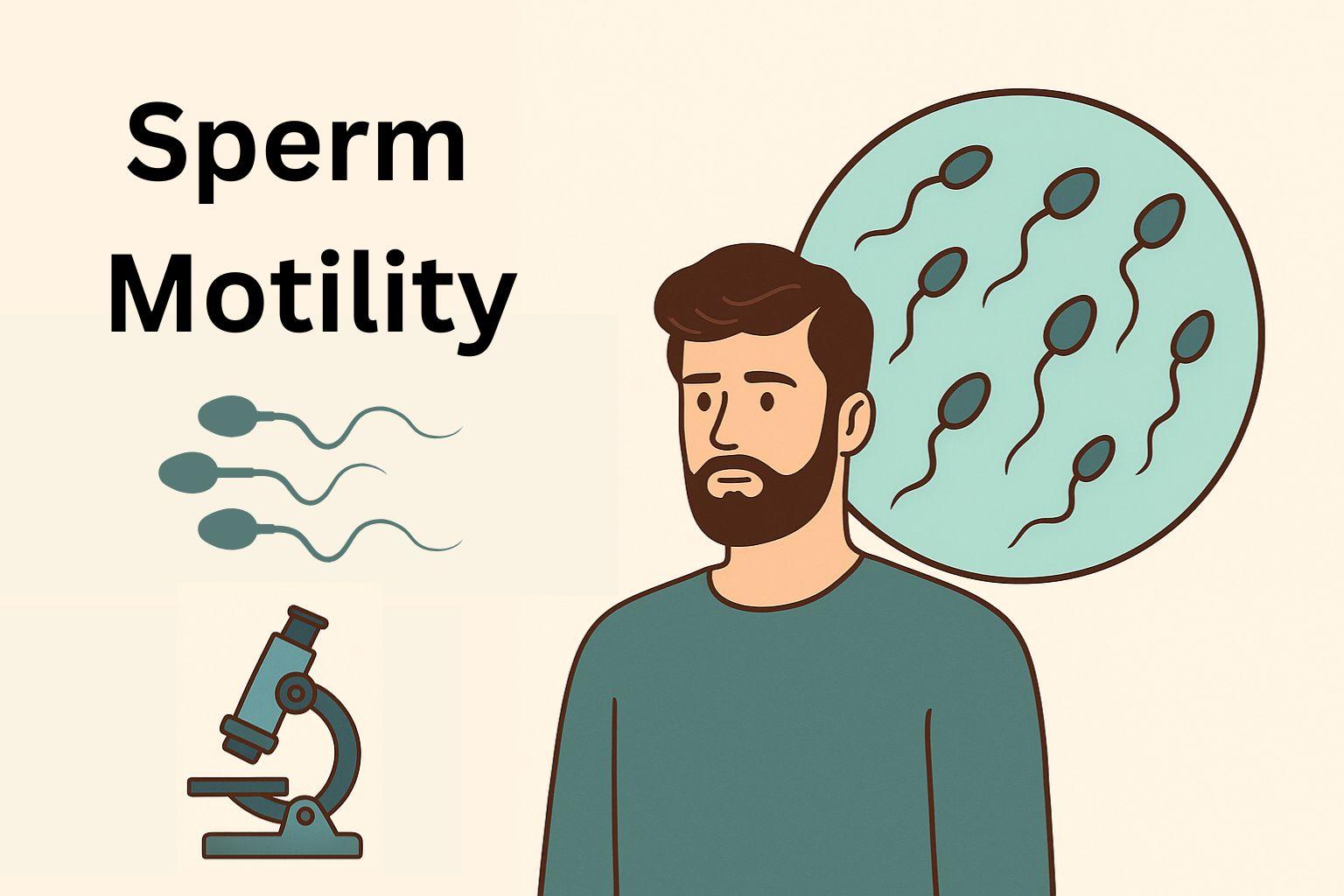Sperm motility is one of the most imperative factors in male fertility. There may be a healthy sperm count and normal morphology, yet you have a problem with conception when your sperm do not swim well. After ejaculation, the sperm passes through the female reproductive system, along cervical mucus and into the egg. This becomes almost impossible without proper movement. Low sperm motility is a condition in many men, and they only notice it after struggling with conceiving; therefore, awareness and early testing are important in family planning.
Sperm motility affects approximately 40% of male infertility cases, which is why it must be addressed and treated accordingly.
What is sperm motility?
Sperm motility is the efficiency of the movement of sperm cells. The tail, called the flagellum, propels the sperm forward with a rapid whipping motion. Doctors measure this during a semen analysis test, categorising movement into three types: progressive motility in sperm (swimming straight), non-progressive (moving but not straight), and immotile sperm (not moving at all).
An average semen analysis has at least 200 sperm cells under a microscope. The lab technician determines the sperm motility percentage for pregnancy by counting the number of sperm that move progressively. This percentage directly correlates with fertility potential. The analysis is performed within an hour of taking the sample to obtain the correct results, since the motility of the sample will diminish with time in the outside environment.
Normal motility sperm range
The World Health Organisation sets the baseline for normal motility sperm at 40% or higher total motile sperm, with at least 32% showing progressive movement. These numbers represent the minimum threshold for natural conception.
Your sperm motility percentage for pregnancy impacts success rates, where men with motility above 50% generally have better chances of natural conception. Those falling below 32% progressive motility may need fertility interventions. Results can vary between tests, so doctors often recommend repeat testing after three months if initial results show low sperm motility. This timeframe allows for a complete sperm production cycle.
How low sperm motility affects fertility
The reduced motility sperm creates a big obstacle to conception. The sperm have to swim about 18 cm through the cervix and uterus to enter the fallopian tubes, where fertilisation takes place. There is a reduced motility of low sperm motility, which means that very few sperm actually make this journey, and this hugely lowers the chance of fertilisation of eggs.
The severity varies. Mild cases may need a change in lifestyle and a longer period to conceive. Moderate cases can be helped with intrauterine insemination, whereby the sperm moves closer to the egg. Other severe cases with mostly immotile sperm require supportive reproductive technology such as IVF with ICSI. The age and fertility of the female partner also determine the overall conception probability.
Causes of reduced sperm motility
Medical conditions
- Varicocele (enlarged scrotal veins)
- Sexually transmitted diseases
- Hormonal imbalances
- Genetic abnormalities
- Undescended testicles
Lifestyle factors
- Smoking, alcohol, and drug use can greatly affect male fertility – smoking destroys sperm DNA and lessens its movement capability, while excessive alcohol consumption disrupts hormone production.
- Obesity: It changes testosterone and scrotal temperature
- Stress: It increases cortisol, suppressing sperm production
- Environmental toxins: Exposure to pesticides, heavy metals, and industrial chemicals
- Heat exposure: Tight underwear, hot baths, and laptop use on the lap raise testicular temperature.
How to increase sperm motility
Improving low sperm motility often starts with lifestyle changes.
- Stop smoking immediately and limit alcohol to occasional drinks.
- Maintain a perfect BMI through balanced nutrition and exercise.
- Wear loose-fitting underwear and avoid hot tubs.
These changes take roughly three months to show results, matching the sperm development cycle.
Diet plays an important role, too.
- Antioxidant-rich foods like berries, nuts, and leafy greens protect sperm from oxidative stress. Zinc and selenium support sperm production.
- Omega-3 fatty acids from fish improve membrane fluidity, improving movement. Staying hydrated helps maintain semen volume and consistency.
Supplements such as Coenzyme Q10 and vitamin combinations show promise in clinical studies. However, consult a fertility specialist before starting any supplementation programme. The Male Fertility Clinic provides professional analysis to identify the root cause of reduced sperm motility and gives treatment plans accordingly.
Conclusion
Sperm motility is a direct determinant of your fertility potential and cannot be ignored. The test gives definite answers about male reproductive health and helps to provide useful treatment strategies. It is always best to have a professional evaluation on whether you have low sperm motility or wish to maximise your fertility before trying to conceive.
The Male Fertility Clinic specialises in the diagnosis and treatment of male fertility, helping you to have control over your reproductive future. Don’t wait until conception becomes a prolonged struggle; book the consultation and get the answers.


